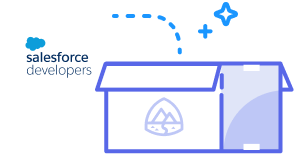You need to sign in to do that
Don't have an account?
opportunity amount in column header total value
Hi all .
I have opportunity object which has lookup to same opportunity (simply one one opportunity has 4 opportunities) how to display the opportunity amount in column header total value?
I have opportunity object which has lookup to same opportunity (simply one one opportunity has 4 opportunities) how to display the opportunity amount in column header total value?






 Apex Code Development
Apex Code Development
Please read the below article :
How to Create an Opportunity Hierarchy, Parent Opportunity or Opportunity Bundles
Salesforce does not have standard functionality that simulates an Opportunity Hierarchy. However, depending on your business needs, you may be able to simulate an Opportunity hierarchy by creating a custom object (Parent Opportunity or Opportunity Bundle) to associate other opportunities with via a Lookup Relationship.
The following scenario uses a custom object called "Parent Opportunity" and a Lookup Relationship field on the standard Opportunities object to associate standard Opportunity records with the custom Parent Opportunity record. This is a One toMany relationship between a Parent Opportunity and Opportunities. The Parent Opportunity is simply used to group the Opportunities and reporting is facilitated using the Report object to create a custom report to fit your business needs.
This method of creating an Opportunity Hierarchy is not very flexible however using a Summary Report, the report is able to sum the Opportunity Amount values and average the Probability values and show the sum and average on the same line as the Parent Opportunity Name, thus rolling up the values from all Opportunity records and associating them with the proper Parent Opportunity line on the report. This is only useful for a visual representation of data, if the Parent Opportunity records require that values from the Opportunity records roll up for display on the Parent Opportunity record, this is not possible without additional APEX or S-control coding. Please closely evaluate your business needs before you commit to using this method to create your Opportunity Hierarchy.
Follow the instructions below to replicate this behavior.
STEP 1: Create a new custom object named "Parent Opportunity". SETUP | App Setup | Create |Objects | Click the "New Custom Object" button.
STEP 2: Create a new custom Lookup Relationship field on the Opportunities object. SETUP | App Setup | Customize | Opportunities | Fields | Click the "New" button in the section titled "Opportunity Custom Fields & Relationships".
STEP 3: Create a new Custom Report by going to the Reports tab and clicking the "Create New Custom Report Button".
Given that in Step 1 you enabled reporting for the new custom object, and you created a lookup relationship field on the Opportunities object, you should have a new report type available to you in the Report Wizard.
Look for Opportunities and Parent Opportunity (or name of custom object created in Step 1) as an option in the report type list.
Select Summary Report for the report format.
Account: General - Account Name
Parent Opportunity - General: Parent Opportunity: Name
STEP 4: Create a Parent Opportunity record and save it. Create several Opportunities and select the name of the proper Parent Opportunity record on the Parent Opportunity lookup field. Run the report that you saved in the previous step to test it out.
FINAL STEP: Add additional customization such as APEX code and Workflow triggers to meet additional business needs. Some things you may want to consider for further customization:
-Create validations for the Parent Opportunity object so that its record cannot be closed until all the Opportunities related via lookup have also been closed won/lost.
-Adding your Opportunity Hierarchy report to dashboards.
-Using Apex Triggers to update Parent Opportunity Objects with totalized Amounts from related Opportunities.
https://help.salesforce.com/HTViewSolution?id=000004368&language=en_US
Please mark this as best answer if your query is resolved, so it will help others in future.
Thanks,
Gaurav Jain